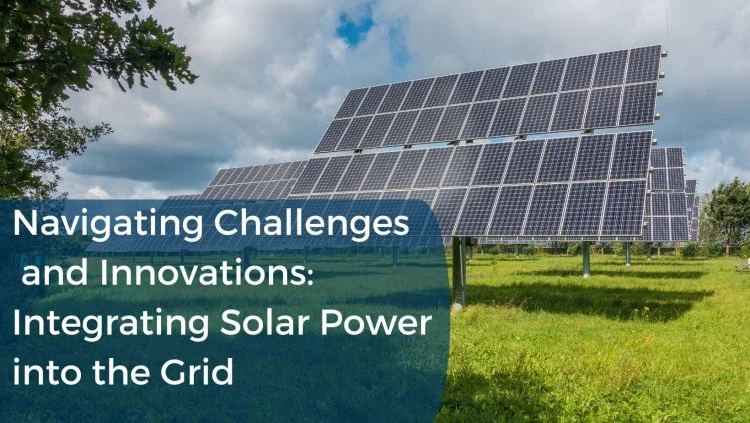Navigating Challenges and Innovations: Integrating Solar Power into the Grid
As the world turns towards cleaner and sustainable energy solutions, the integration of solar power into existing electrical grids has become a focal point for renewable energy companies and solar power projects.

As the world turns towards cleaner and sustainable energy solutions, the integration of solar power into existing electrical grids has become a focal point for renewable energy companies and solar power projects. While solar energy offers abundant potential, its seamless integration into the grid presents a set of challenges that need to be addressed strategically. In this article, we delve into the key challenges faced by the renewable energy sector and explore innovative solutions to facilitate the smooth incorporation of solar power into the grid.
· Challenges in Solar Power Integration:
1. Intermittency and Grid Stability:
Solar power generation is inherently intermittent, dependent on weather conditions and time of day. The inconsistency in power output poses challenges to grid stability, requiring innovative solutions to balance the supply and demand in real-time.
2. Grid Capacity and Infrastructure:
The existing electrical grid infrastructure might not be equipped to handle the influx of power generated by large-scale solar projects. Upgrading and expanding grid capacity are crucial to accommodate the increasing share of solar energy in the overall energy mix.
3. Variable Energy Pricing:
Fluctuations in solar power generation can lead to variations in energy prices. Integrating solar power into the grid necessitates mechanisms to address these variations and ensure stable and predictable pricing for consumers.
4. Energy Storage Limitations:
Efficient energy storage solutions are pivotal for storing excess energy generated during peak sunlight hours for use during periods of low sunlight. Current energy storage technologies face challenges related to cost, efficiency, and scalability.
5. Regulatory Hurdles:
Complex regulatory frameworks and policies can create barriers to the integration of solar power into the grid. Streamlining regulations and incentivizing solar projects are essential for promoting a conducive environment for renewable energy companies.
· Solutions to Overcome Integration Challenges:
1. Advanced Grid Management Systems:
Implementing smart grid technologies enables real-time monitoring and control of electricity flows. Advanced grid management systems can predict fluctuations in solar power output and adjust grid parameters accordingly, enhancing stability.
2. Grid Modernization and Expansion:
Investing in the upgrade and expansion of the existing grid infrastructure is vital. This includes the development of high-capacity transmission lines and distribution networks capable of efficiently handling the increased load from solar power projects.
3. Innovative Energy Storage Solutions:
Research and development in energy storage technologies, such as advanced batteries and thermal storage, can address the challenges of intermittency by storing excess energy during peak production for use during low production periods.
4. Demand Response Programs:
Implementing demand response programs can help manage the variability in solar power generation by encouraging consumers to adjust their energy consumption patterns based on grid conditions and solar availability.
5. Policy Advocacy and Collaboration:
Renewable energy companies play a crucial role in advocating for favorable policies and collaborating with governments and regulatory bodies. Creating a supportive policy environment can streamline approval processes and encourage investment in solar power projects.
Conclusion:
As the world transitions towards a cleaner energy future, the challenges associated with integrating solar power into the grid are being met with innovative solutions. Renewable energy companies, along with advancements in technology and supportive policies, are paving the way for a more sustainable and resilient energy landscape. By addressing these challenges head-on, the solar power sector can continue to contribute significantly to the global shift towards greener and more sustainable energy sources.
What's Your Reaction?
































